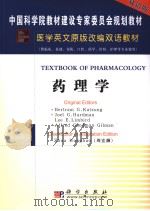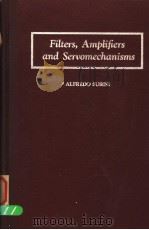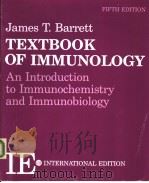《TEXTBOOK OF SERVOMECHANISMS》求取 ⇩
| 作者 | JOHN C.WEST 编者 |
|---|---|
| 出版 | ENGLISH UNIVERSITIES PRESS LTD |
| 参考页数 | 238 ✅ 真实服务 非骗流量 ❤️ |
| 出版时间 | 1955(求助前请核对) 目录预览 |
| ISBN号 | 无 — 违规投诉 / 求助条款 |
| PDF编号 | 813353548(学习资料 勿作它用) |
| 求助格式 | 扫描PDF(若分多册发行,每次仅能受理1册) |

1.INTRODUCTION9
1.1Servomechanisms9
1.2 Development10
2.OPEN AND CLOSED LOOP CONTROL12
2.1The Concept of Error12
2.2 R.P.C.Systems13
2.3 Further Types of Control Systems14
3.SIMPLE POSITION CONTROL15
3.1A Specific System15
3.2 The Amplifier and Motor16
3.3 Performance of the Model18
3.4 Damping21
3.5 Numerical Examples22
4.FRICTION DAMPING24
4.1Friction24
4.2 Coulomb Friction24
4.3Viscous Friction28
4.3.1 Velocity Input Test31
4.3.2 Summary of Viscous Friction Damping32
4.4 Numerical Examples32
5.OUTPUT VELOCITY FEEDBACK34
5.1Physical Implication of Damping34
5.2 Velocity Feedback in the Model34
5.3 The Response in the Phase Plane37
5.4 Numerical Examples40
6.THE SERVOMECHANISM AS A NETWORK42
6.1Four Terminal Networks42
6.2 The Transfer Function45
6.3 Single Feedback Loops49
6.4Sinple Feedback Examples51
6.4.1 The Anode Follower53
6.4.2 The Integrator54
6.4.3 The Differentiating Circuit55
6.5 Frequency Response Plotting56
7.ALTERNATIVE DAMPING METHODS62
7.1The Elimination of Velocity Lag62
7.2 Transient Velocity Feedback62
7.3 Input Derivative Feedforward—Output Derivative Feedback66
7.4 "Phase Advance"or Derivative of Error Damping68
7.5 Numerical Examples73
8.STABILITY75
8.1Additional Time Constants in R.P.C.Systems75
8.1.1 Field Build-up Time75
8.1.2 Phase-advance Networks75
8.1.3 Error Smoothing76
8.1.4 Power Amplifiers76
8.2 Velocity Feedback System with Field Build-up Time76
8.3 Phase Advance Stabilisation78
8.4The Hurwitz-Routh Stability Conditions79
8.4.1 The Cubic Equation81
8.4.2 The Equation of Order n82
8.5 Numerical Example83
9.CONSIDERATION OF STABILITY FROM THE OPEN LOOP FREQUENCY RESPONSE FUNCTION85
9.1General Considerations85
9.2The Polar Form of the Frequency-response Function87
9.2.1 Real and Imaginary Parts of the Response Function88
9.2.2 The Logarithmic Form of the Reaponse Function89
9.3 The Generalised Frequency-response Function90
9.4The Nyquist Theory of Stability91
9.4.1 The Number of Roots94
9.5The Degree of Stability94
9.5.1 Phase-advance Technique95
9.6 Gain and Phase Margins97
9.7 Conditionally Stable Systems97
10.THE USE OF THE APPROXIMATE STRAIGHT LINE SEG-MENTED GAIN-FREQUENCY CHARACTERISTICS100
10.1General Relationship between Real and Imaginary Parts of the Frequency-response Function100
10.2 Minimum-phase Networks101
10.3 Relationship between Gain and Phase103
10.4 Area of the log coth ?Curve105
10.5 Approximate Phase Determination106
10.6 The Phase-margin Approach108
10.7 Numerical Example111
11.SPEED CONTROL112
11.1Principle of Speed-control Systems112
11.2 The"Velodye"112
11.3 Effect of Loading117
11.4 The Elimination of Droop118
11.5 Measurement of Torque120
11.6 Reducing Brush Ripple123
11.7 Numerical Examples125
12.INTEGRAL CONTROL126
12.1The Principle of Integral Control126
12.2 The Frequency-response Viewpoint126
12.3 The Stability Requirements129
12.4 Proportional,Derivative and Integral Controllers132
13.MEASURING DEVICES AND ERROR DETECTION135
13.1The Form of the Signal135
13.2 Potentiometers for Angular Measurement136
13.3 A.C.Magslip Devices137
13.4 Mechanical Error System using Magslips138
13.5 Inductive Pick-off139
13.6 Capacitive Pick-off139
13.7 Phase-sensitive Rectifiers140
13.8 Measurement of Velocity142
13.9 The Condenser Tachometer143
13.10 A.C.Signal Velocity Generator144
13.11 D.C.Signal Accelerometer146
14.STATIC AMPLIFIERS147
14.1The Meaning of Amplification147
14.2The D.C.Amplifier148
14.2.1 Single-ended Termination150
14.3 Drift in D.C.Amplifiers153
14.4 Power-gain-Band-width Relationship in Multi-stage Amplifiers155
15.ROTARY AMPLIFIERS Ⅰ158
15.1The Use of Rotary Amplifiers158
15.2 The Separately Excited Generator158
15.3 Power-gain-Band-width Relationship159
15.4 The Criterion of Performance161
15.5 The Effect of Feedback162
15.6 The Effect of Commutation on the Frequency Response of the Generator164
15.7 The Shunt-generator Amplifier165
15.8 The Effect of Eddy Currents on the Field Time Constant168
16.ROTARY AMPLIFIERS Ⅱ170
16.1The Ward-Leonard Arrangement170
16.2 The Metadyne171
16.3 The Steady-state Analysis173
16.4 The Separately Excited Machine Analogy of the Metadyne176
16.5 The Amplidyne177
16.6 The Amplidyne with Motor Load178
17.THE SERVO-MOTOR180
17.1The General Function of the Servo-motor180
17.2 The Split-field D.C.Motor181
17.3 Constant Armature Current Arrangements182
17.4 The Two-phase Induction Motor184
17.5 Three-phase Induction Motors185
18.THE STEADY-STATE ACCURACY OF POSITION CONTROL SYSTEMS187
18.1Static Accuracy187
18.2 Two-channel Measurement or Coarse-Fine Systems190
18.3 Disadvantages of the Change-over System193
18.4 The"Over-ride"Method194
18.5 Fine Amplitude Limiting195
18.6 Summary of Two-channel Systems198
19.GRAPHICAL PRE-DETERMINATION OF STABILITY FROM THE OPEN-LOOP FREQUENCY RESPONSE LOCUS200
19.1The Need for Stability Pre-determination200
19.2 The Orthogonal Relationship between σ and ω201
19.3 Graphical Construction202
19.4 Aid to Rapid Construction203
19.5 Specific Examples204
19.6 The Use of the Phase and Gain Margins206
20.SOME EFFECTS OF SATURATION ON A SIMPLE SERVO-MECHANISM208
20.1Step Function Response with Initial Velocity208
20.2 Amplitude Limitation in the Error Detector210
20.3 Amplitude Limitation in the Amplifier212
20.4 Approximate Calculations for Limited Amplitude Systems216
20.5 Function Velocity Damping218
20.6 The"Serme"System221
20.7 Numerical Example222
21.THE TREATMENT OF NON-LINEARITIES223
21.1The General Second-order Equation223
21.2 The Use of Finite Difference Equations226
21.3 Backlash229
21.4 Omissions230
REFERENCES231
22.1Control Systems231
22.2 Non-linear Mechanics231
REFERENCES TO SPECIFIC POINTS MENTIONED IN THE TEXT232
INDEX235
1955《TEXTBOOK OF SERVOMECHANISMS》由于是年代较久的资料都绝版了,几乎不可能购买到实物。如果大家为了学习确实需要,可向博主求助其电子版PDF文件(由JOHN C.WEST 1955 ENGLISH UNIVERSITIES PRESS LTD 出版的版本) 。对合法合规的求助,我会当即受理并将下载地址发送给你。
高度相关资料
-

- INTRODUCTION TO SERVOMECHANISMS
- 1954 LONDON METHUEN & CO.LTD.
-

- TEXTBOOK OF BOTANY
- 1956 UNIVERSITY TUTORIAL PRESS LTD.
-

- PHARMACOLOGY FOR THE DENTAL HYGIENIST FOR STUDENTS AND PRACTITIONERS
- 1978 LEA & FEBIGER
-

- TEXTBOOK OF GYNECOLOGY
- 1958 THE WILLIAMS % WILKINS COMPANY
-

- TEXTBOOK OF SURGERY
- 1964 E & S LIVINGSTONE LTD
-

- TEXTBOOK OF PATHOLOGY
- 1964 MCGRAW HILL BOOK COMPANY
-
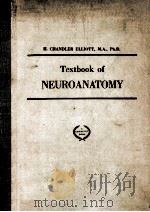
- TEXTBOOK OF NEUROANATOMY
- 1963 PITMAN MEDICAL PUBLISHING J.B.LIPPINCOTT COMPANY
-
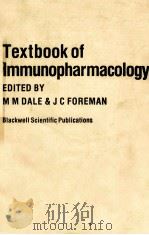
- Textbook of immunopharmacology
- 1984 Blackwell Scientific Publications : Blackwell Mosby Book Distributors
-

- TEXTBOOK OF BIOCHEMISTRY
- 1958 W.B.SAUNDERS COMPANY
提示:百度云已更名为百度网盘(百度盘),天翼云盘、微盘下载地址……暂未提供。➥ PDF文字可复制化或转WORD
